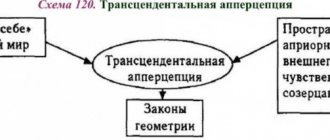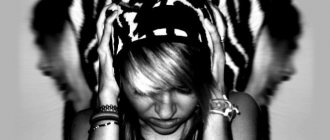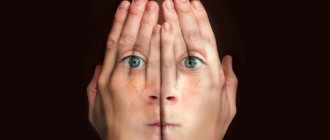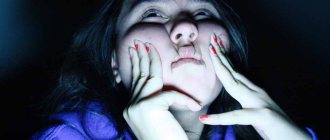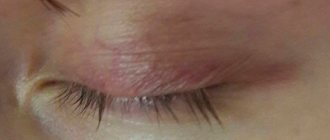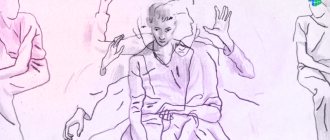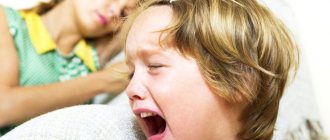Involuntary contractions of the facial muscles make a person stand out from the rest of the crowd and attract the attention of others.
Nervous tics in adults bring a lot of trouble to their owners. Typically, this neurological disorder, otherwise referred to as tic hyperkinesis, develops in childhood or early adolescence. As the psyche develops and strengthens, the disease can go away spontaneously and without consequences.
However, in older age, nervous tics are not so harmless. Usually this is an undertreated or left to chance disease that has become chronic. Therefore, it is worth making an effort to get rid of tic manifestations.
General concept
Nervous tics are uncontrollable muscle spasms or repetitive movements or sounds. They arise suddenly, unpredictably, and cause a lot of problems and troubles.
Motor impulses are stereotypical and obsessive in nature. They cannot be controlled, although from the outside it may seem that some of them are produced intentionally. Therefore, nervous tics cause not only psychological, but also physical discomfort.
From a scientific point of view, the development of nervous tics is caused by a violation of the production of dopamine or serotonin, which are neurotransmitters. They, in turn, are conductors of signals from organs and muscles to the brain, and back. If the production of these hormones is insufficient, the connection is interrupted, a failure occurs, or false impulses are sent. A separate organ, muscle or limb ceases to obey the central nervous system, producing voluntary contractions or sounds.
Tic hyperkinesis in adults can be:
- primary – manifest as a separate disease;
- secondary – serve as consequences of other disorders;
- hereditary - these are, most often, severe disorders expressed in the form of generalized tics or Tourette's syndrome.
Nervous tics in adults, as well as in children, are divided into two types: motor and vocal. Motor (aka motor) are produced by individual muscles or their groups, vocal, that is, vocal - in the performance of which sounds are involved.
Both can be either simple or complex. This depends on the number of muscles involved in producing the tic, or on the complexity of the sounds (in cases of vocal hyperkinesis). A nervous tic, steadily progressing and acquiring new forms, gradually turns into a generalized form.
There are also local and widespread tic hyperkinesis. In the first variant, a nervous tic affects one muscle group, most often the facial muscle. When several muscle groups are involved, we can talk about common tics. Moreover, in most cases they begin with local hyperkinesis.
Prevention
The basis for preventing any tics is maintaining a healthy lifestyle. Any stress, overwork and lack of sleep increase the severity of tics, so they need to be excluded. It is useful to give up bad habits.
Sources:
- Features of quantitative and qualitative indicators of the blink reflex and pathological system in patients with tics. Mavlyutova R.A., Yakupov R.A., Rashitov L.Z., Grishin S.N., Makletsov S.V., Zakharov A.V. Bulletin of modern clinical medicine No. 3, 2017. pp. 70-74
- Clinical and psychophysiological characteristics of children and adolescents with chronic tics. Chutko L.S., Surushkina S.Yu., Yakovenko E.A., Nikishena I.S., Anisimova T.I., Bykova Yu.L., Sergeev A.V. Journal of Biomedical Research, 2013. p. 91-98
- Clinical and electroencephalographic features of the course of chronic tic disorders in children and adolescents. Ermolenko N.A., Zakharova E.I., Buchneva I.A. Neurology, neuropsychiatry, psychosomatics, 2016. pp. 18-23
- New possibilities for the treatment of tic hyperkinesis using anticonvulsant drugs. Zykov V.P., Kashirina E.A., Naugolnykh Yu.V. Epilepsy and paroxysmal conditions, 2016. p.45-51
- Tics in children. Main directions of treatment. Demeuova A.K., Akhmetova Z.K. Science of life and health, 2010. p.95-96
Characteristic symptoms of the disease
The problem of the occurrence of nervous tics is a fairly pressing topic of our time. The physiological reason for the development of hyperkinesis: disruption of the functioning of certain parts of the brain, failure of neural connections or a reaction to an external stimulus.
A tic in an adult can manifest itself in the following ways:
- twitching of the eyebrow or eyelid;
- wink;
- forehead wrinkling;
- licking or pursing lips;
- swelling of the wings of the nose;
- tongue sticking out;
- shrugging shoulders;
- trembling of the whole body;
- raising hands;
- pronunciation of individual sounds, words and even phrases;
- characteristic grunting;
- whistling;
- coughing
Since nervous tick is a neurological disease, its course can be purely individual. Symptoms may vary depending on the general physical condition and the presence of external stimuli. Watching TV for a long time, as well as working or playing on a computer, negatively affects the course of the disease.
Depending on the severity of the clinical picture, hyperkinesis is considered as:
- single - appearing from two to nine times in 20 minutes or during remission;
- serial - occur in paroxysms, in 20 minutes from 10, but not more than 30 ticks:
- status - the most severe condition, in which from 30 to 600 or more manifestations occur in the same 20 minutes. They are characterized by the acute stage of the disease.
Excitement, overwork, and depression provoke an increase in the frequency of tics, while switching attention and focusing on an exciting activity, on the contrary, reduces this tendency.
Causes of tic disorders
The exacerbation of the symptoms of hyperkinesis directly depends on the state of the nervous system. The most common irritants are:
- stressful situations;
- lack of understanding of what is happening;
- circumstances that cannot be influenced in any way;
- anger caused by external stimuli;
- low self-esteem, lack of self-confidence.
Since an adult’s psyche is already formed, it is not so easy to disrupt it. Therefore, there is an opinion that the causes of hyperkinesis should be sought in childhood or adolescence. It was during this period that pathology began to develop, however, either its manifestations were too weak, or the patient deliberately did not want to notice it.
A separate group should include nervous tics that appear as a result of such bad habits as:
- alcoholism;
- smoking;
- addiction;
- passion for gambling.
Any of these habits is an addiction, and, sooner or later, there comes a time when a person loses control over the situation. Continuing the previous lifestyle becomes impossible, and changes are frightening, accompanied by anxiety and irritability, even physical pain or nausea. The cause of nervous tics in this case can be either overexcitation of the central nervous system or a stressful situation caused by a sharp cessation of the habit, including forced one.
Confession of a former alcoholic: “I tried alcohol when I was a teenager, at the age of 14. First it was beer, then wine, then liqueur, cognac, whiskey, vodka, etc. I can’t say that I immediately liked the taste of alcoholic drinks. However, in the company it looked cool, older friends treated me, and over time I got so involved that not a day passed that I went to bed sober.
Even my always busy parents began to notice my passion for alcohol. Of course, I tried to somehow keep the situation under control, but little came of it. If I didn't drink for at least a couple of days, those around me simply tried to avoid me. And there was a reason for this. I was plagued by outbursts of anger and uncontrollable aggression. What can I say, I was afraid of myself, and besides, my left eyelid suddenly began to twitch and my mouth seemed to be distorted. But it was worth drinking a couple of glasses of vodka - and that’s it, I’m the life of the party, and there was no trace left of the nervous tic! Such a drastic transformation could not help but frighten.
Having discussed this situation at the family council, we came to mutual agreement that we couldn’t do it without the help of specialists. At that time, I was already 20 years old: I had abandoned my studies, no friends, no work, no personal life. As they say, there is nothing to lose. I was admitted to a clinic for inpatient treatment for alcohol addiction. The process progressed successfully because I myself sincerely wished for its positive conclusion.
There was only one circumstance that clouded the situation: a nervous tic that had previously occurred in a sober state now appeared more and more often. Moreover, its progression was observed in the form of an involuntary shrug of the shoulders to the existing twitching of the eyelid and mouth. The doctor changed medications, trying to find the most suitable one, but the improvement was only temporary. I managed to overcome my alcohol addiction, albeit not without outside help, but the fight against nervous tics is in full swing...”
Why do tics occur?
Neurosis-like tics
Primary tics, which have a residual organic origin, confirmed by corresponding changes in the EEG. They develop under the influence of negative factors during pregnancy (bad habits and illnesses of the mother, fetal hypoxia, gestosis, prematurity, complications during childbirth) or in the first years of life (neuroinfections, head injury, intoxication). They often make their debut at the age of 7-10 years.
Characterized by a stable course, the presence of a clear “tic lesion” with a tendency to spread tics. They do not decrease during periods of rest (on vacation); on the contrary, they often arise for the first time in a favorable psychological environment. Most often they begin with blinking; if left untreated, they spread to other parts of the face (grimacing), shoulders, sometimes the upper part of the body, and less often, the legs.
Tourette's syndrome
The pathology is genetically determined, more often transmitted through an autosomal dominant pathway, less often through an autosomal recessive or polygenic pathway. As a rule, it manifests itself at the age of 5-6 years with grimacing, winking, blinking, twitching of the shoulder girdle, clapping of palms, and other movements in the face and upper half of the body. Motor tics are complemented by sound ones. Then hyperkinesis spreads to the lower part of the body and legs and becomes more complex. Echopraxia, copropraxia, and accidental self-harm are possible.
Neuropathic tics
They develop against the background of early childhood neuropathy. They first appear at the age of 3-8 years. Children are anxious, restless, prone to stereotypical movements, mobile, but with insufficiently developed coordination, which causes an increased likelihood of injury. They often suffer from autonomic disorders and weather dependence. Tics, as a rule, are local, sometimes spreading to several zones, appear or become more frequent when overworked, or excess impressions.
Teak
Neurotic tics
They can develop at any age, starting from 3 months, and are provoked by mental trauma and emotional upheaval: sudden fear, expectation of bad things, unusual circumstances of communication, external conflicts and internal contradictions. They are often part of the clinical picture of obsessive-compulsive neurosis. They develop less frequently with other neuroses in children.
Tics are realized, briefly amenable to conscious control, with subsequent “recoil” in the form of increased tic movements. They arise or become more frequent in a state of passive attention, overwork, or severe anxiety. Characterized by instability, frequent replacement of one tic by another. Children with obsessive-compulsive disorder try to overcome their “bad habit.” Attempts to delay on the part of the child or parents (remarks, prohibitions) worsen the psycho-emotional state, provoke aggressiveness, irritability, and headaches.
Symptomatic tics
Secondary tics are observed in diseases and pathological conditions accompanied by damage to the extrapyramidal system. Distinctive features are constancy (rare changes in localization, strength and frequency), the impossibility of conscious suppression, combination with other neurological disorders and pathopsychological disorders. The main provoking factors are considered:
- encephalitis of various origins;
- hereditary cerebral pathologies;
- traumatic brain injuries;
- vascular damage (developmental anomalies, malformations, etc.);
- taking medications: psychostimulants, antipsychotics, anticonvulsants.
In addition, secondary tics are sometimes detected after streptococcal infections (for example, tonsillitis) and other infectious diseases. They arise or worsen during the recovery period or some time after the condition has normalized.
Neuralgia
With neuralgia, special tic movements are noted - painful tics, which are muscle twitching against a background of intense pain. Detected in the following diseases:
- Trigeminal neuralgia.
It is accompanied by repeated attacks of prosopalgia lasting several minutes, which is a “shooting” pain similar to an “electric shock” that spreads from the lateral surface to the center of the face. - Neuralgia of the ear ganglion.
Paroxysms of throbbing or burning pain occur in front of the ear canal and in the ear area, radiating to the jaw, neck, back of the head, and shoulder. Lasts from a few minutes to an hour or more. Hypersalivation is possible. - Ganglionitis of the pterygopalatine ganglion.
Episodes often begin at night and last from several hours to several days. Accompanied by pain in the eyeball, temple, hard palate and neck. Characterized by pronounced autonomic disturbances and a tendency to spread to adjacent anatomical zones.
Features of nervous tics in adults
In adulthood, a nervous tic can have several causes. Usually this:
- head injuries;
- experienced stress, severe fear or shock;
- side effect after a stroke;
- the result of both benign and cancerous brain tumors;
- consequences of viral or infectious diseases such as meningitis, tonsillitis, influenza, etc.;
- poisoning with toxic substances that affect the functioning of the central nervous system.
On the other hand, a nervous tick can be a precursor to an epileptic attack or the same stroke. Among the adult population, nervous tics of various directions are more often observed in males, although in childhood the division by gender is approximately the same. The reasons for this are not fully understood.
Another interesting feature is that hyperkinesis does not appear during sleep. That is, no matter how severe the symptoms may be while awake, as soon as a person falls asleep, they disappear, but, unfortunately, they resume again after waking up.
What it is?
Eye tic in neurology is when both eyelids contract or the muscles of both eyes contract strongly. This name is often confused with myokymia of the eyelid - involuntary contraction of the upper or lower eyelid (orbicularis oculi muscle). Both syndromes are hyperkinesis. That is, temporary or permanent contraction of fibers in the muscles. Myokymia is characterized by painlessness, lower amplitude, and frequency of twitching. It is rarely associated with the appearance of serious diseases and often accompanies overwork and stress.
Nervous tics in older people
Tic hyperkinesis can also develop in old age. Their symptoms are similar to the nervous tics described above, but may appear somewhat slower. The patient himself may not attach importance to them or simply not pay attention, but those around him notice it. Some attribute unusual twitching to age-related changes or accompanying signs of illnesses such as Parkinson's disease, etc.
Most often, these are motor tics, gradually turning into tremor. They are focused on:
- muscles of the head and face;
- hands;
- muscles of the neck and shoulder girdle.
A thorough and lengthy examination is necessary to make a correct diagnosis. Unfortunately, not all elderly patients agree to lengthy diagnostic procedures, preferring to self-medicate or use some folk remedies.
Modern methods of therapy
A person who discovers a nervous tic in himself should first of all go to a neurologist. It is this doctor who performs the initial examination, studies the symptoms, compares them with other somatic manifestations and refers them to the necessary diagnostic tests.
In some cases, when the disease may be hereditary, you should consult a geneticist. When making a diagnosis, all past illnesses and injuries ever received, including psychological ones, are taken into account.
In order to identify the causes of tic hyperkinesis or other diseases of which they are symptoms, it is necessary to undergo the following hardware diagnostics:
- Detailed biochemical blood test.
- Electroencephalography (EEG) - determines the functional state of the brain and confirms or denies the presence of epileptic disorders.
- Electroneuromyography is a study that allows you to identify muscle pathologies.
- MRI – provides complete, detailed information about the structure of the brain.
- Computed tomography scans the brain and surrounding tissues of the skull for injuries, hematomas, tumors and other degenerative processes.
- Ultrasound diagnostics of the head (USDG) is prescribed for general circulatory disorders or suspected hyperkinesis due to vascular obstruction.
In severe forms of hyperkinesis, neuropsychological testing is recommended. This method allows you to identify the volume of visual and auditory memory and determine the reasons for problematic memorization of information.
Nervous tics observed in adults clearly require treatment. The most common and effective types are:
- medicinal - using medications that stimulate the restoration of neural impulses between the brain and uncontrolled parts of the body;
- psychotherapeutic – group or individual sessions, the goal of which is not so much to get rid of tics, but to accept one’s condition and adapt to society.
Certain areas of psychotherapy - hypnosis, relaxation, transcranial micropolarization, autogenic training are aimed at suppressing pathological reflexes. Medicines used to treat nervous tics in adults are antipsychotics and antidepressants.
The greatest productivity can be achieved by combining both treatment methods. The ability to control your own emotions makes it possible to reduce the symptoms of the disease to a minimum and even achieve long-term remission.
Varieties
During the diagnostic process, doctors determine the type of disease. Not all facial pathologies are dangerous for humans and can bring discomfort into everyday life. If they do not interfere with people and do not have negative consequences, they generally do not need treatment for nervous tics. But in any case, it is necessary to conduct an examination to determine the root causes of their occurrence.
The most common types are:
- simple. These include blinking, twitching of the head or limbs (involuntary tremors), winking, clenching hands into fists;
- complex. This category includes turning while walking, jumping, snapping fingers, and other actions.
The voiced options refer to motor nervous tics. But there are also others, for example, vocal pathological conditions include smacking, pronouncing certain words and phrases, and grunting.
There is hyperkinesis, which interferes with life. It occurs with complications and does not allow the patient to feel like a full-fledged member of society. Such diseases and symptoms must be corrected. Getting rid of a problem on your own very often does not lead to anything good.
True story
Here is a prime example of the use of several methods to treat tics in adults.
Young woman, 28 years old. I learned what a nervous tic is when I was still a seven-year-old girl. This was manifested by eye twitching and spontaneous spasms of the neck muscles. Conscientious parents, noticing something was wrong with the baby, immediately took her to a neurologist. The doctor prescribed sedatives, rest and protection from stressful situations. We followed all the recommendations, took the pills, but there was no noticeable result.
After some time, the girl learned to independently control the situation, holding back her nervous tics. In the absence of persistent external stimuli, she was quite successful at this. At the end of adolescence, the symptoms were practically no longer observed; it seemed that the disease went away spontaneously.
However, when I started studying at the university, against the backdrop of excitement, a change in my usual environment and other experiences, the nervous tic resumed - the right lower eyelid again gave me no rest. Our heroine, now on her own, decided to seek help from a specialist. After completing a course of medication, she felt a noticeable improvement.
Just when everything seemed to be working out, new reasons for worry arose:
- unplanned pregnancy;
- sudden marriage;
- quarrels with spouse;
- birth of a child;
- chronic lack of sleep.
The combination of these factors again provoked the progression of nervous tics. Now they were concentrated on the back of the neck: the muscles seemed to be cramping, and the head randomly turned to the side. An almost constantly twitching eyelid completed this sad picture.
This time we decided to act more radically. At the neurological center where the patient went, injections were prescribed to reduce muscle sensitivity. They must be used directly in the problem area and with great care. But, apparently, the dose of the drug was incorrectly calculated and the neck muscles simply could not hold the head in the desired position. This caused some discomfort. The effect lasted for about a month, then sensitivity was restored.
Tics in the cervical spine were no longer observed, but eye twitching still bothered him periodically. To get rid of these manifestations of hyperkinesis, the girl wanted to try a drug-free treatment method. Having found a suitable thematic forum on the Internet, she learned that the fight against nervous tics using hypnosuggestive therapy was popular. I took advantage of it.
Despite all the efforts and a considerable amount spent on several sessions of this very therapy, the patient did not receive the expected result. Improvement came only after localizing all external stimuli: divorce from her husband, moving in with her parents, nanny for the child. Self-control and conscious avoidance of stressful situations also helped. No relapses have been observed so far.
Tourette's syndrome
Tourette's syndrome occupies a special place among nervous tics in adults. This is the most severe form of hyperkinesis of all possible. It affects certain areas of the brain, leads to disability and isolation of the patient from society, and can manifest itself with the following symptoms or combinations thereof:
- contraction of the muscles of the face and neck;
- twitching of limbs;
- shrug;
- erratic movements, turning the head or body;
- snapping fingers.
Motor tics are almost always accompanied by vocal ones. This may include coughing, repeated repetition of sounds or individual words, or involuntary shouting of curses.
Tourette's syndrome is usually characterized by a combination of complex motor and vocal tics accompanied by a general disturbance of mental status. The disease significantly worsens the quality of life of its owner. A person cannot visit public places or, for example, choose a profession that requires close contact with the team.
Hereditary factors play a key role in the development of Tourette syndrome. Moreover, it is not at all necessary that the parents also have the same complex tic disorders. It is enough that someone in the family had a nervous tic in childhood. Even if it subsequently disappeared without a trace, the risk of severe consequences in future generations in the form of TS increases many times over.
Treatment
Conservative therapy
The treatment program for primary tics is drawn up according to general principles with slight variations depending on the etiology of the symptom:
- Correction of the daily routine.
It is important to minimize the circumstances that cause tics to appear. Moderate intellectual and physical activity with breaks is recommended until severe fatigue occurs. You need regular nutritious meals, enough sleep, limiting time for computer games, using gadgets, and watching TV. - Psychotherapy.
Cognitive behavioral therapy and art therapy are effective. Good results are observed with animal-assisted therapy. If there are problems in upbringing or an unfavorable family environment, family psychotherapy is indicated. As part of group therapy, patients are taught self-regulation and relaxation skills, new ways of behavior, and conflict resolution. - Psychocorrection.
Required when developmental delays or the presence of concomitant pathologies (ADHD, etc.) are detected. Includes exercises to improve memory, attention, spatial perception, and improve the ability to self-control. Helps improve academic performance and reduce school stress. - Drug therapy.
Indicated when non-drug methods are insufficiently effective. For neurotic disorders, antidepressants and anxiolytics are prescribed. For severe tics that interfere with learning and reduce the quality of life, antipsychotics are recommended. Additionally, vitamins, nootropics, and vascular agents are used. - Physiotherapy, biofeedback therapy.
Physical therapy, classical and segmental massage, acupuncture, laser reflexotherapy, electrosleep, medicinal electrophoresis of the cervical-collar area, galvanization, and water procedures are useful. As part of biofeedback, the patient learns to control the state of the muscles and voluntarily relax them when tics occur.
The selection of drugs for secondary tics is carried out taking into account the type of causative pathology. For neuralgia, anticonvulsants, antispasmodics, and antihistamines are used. Perform therapeutic blockades. Physiotherapeutic procedures are prescribed to reduce pain and inflammation.
Surgery
If conservative therapy for the trigeminal nerve is insufficiently effective, microsurgical decompression is performed or the sensory root of the nerve is destroyed with gamma radiation using stereotactic techniques. It is possible to intersect the branches of the nerve trunk by percutaneous radiofrequency destruction.
Patients with damage to the ear node may be indicated for sanitizing operations on the middle ear, removal of stones or neoplasms of the salivary gland, and other otolaryngological and dental interventions. Adults with Tourette's syndrome undergo deep brain stimulation, however, the technique is still considered experimental and is not used in children.
Consequences of tic hyperkinesis
If the disease cannot be cured completely, you need to learn to live with it. Nervous tics, with the exception of generalized forms or Tourette's syndrome, do not in any way affect a person's consciousness, level of thinking or intellectual abilities. The patient is, as they say, of sound mind, and hyperkinesis can be attributed to behavioral characteristics.
Attention deficit hyperactivity disorder (ADHD) can develop due to progressive nervous tics. It is characterized by impaired memory, attention, and perception of information. Speech becomes either too fast and unclear, or slow. The level of social adaptation decreases.
